Hemoglobin A1C Range for Diabetics: Comprehensive Guide to Understanding and Managing A1C Levels
What is the hemoglobin A1C test. How is diabetes diagnosed using A1C levels. What are the normal, prediabetes, and diabetes A1C ranges. How does A1C compare to other diabetes diagnostic tests. What is prediabetes and how can it be managed. How does eAG relate to A1C and blood glucose monitoring.
Understanding Hemoglobin A1C: A Key Diagnostic Tool for Diabetes
Hemoglobin A1C, often referred to simply as A1C, is a crucial test in diagnosing and managing diabetes. This test provides valuable insights into a person’s average blood glucose levels over the past two to three months, offering a more comprehensive view than daily blood sugar checks.
The A1C test measures the percentage of hemoglobin proteins in red blood cells that are glycated (coated with glucose). As glucose levels in the blood rise, more hemoglobin becomes glycated, resulting in a higher A1C percentage.
Advantages of the A1C Test
- No fasting required
- Reflects long-term glucose control
- Less affected by short-term fluctuations
- Can be performed at any time of day
A1C Ranges: From Normal to Diabetic
Understanding A1C ranges is essential for interpreting test results and determining one’s diabetes status. The American Diabetes Association (ADA) has established the following A1C ranges:
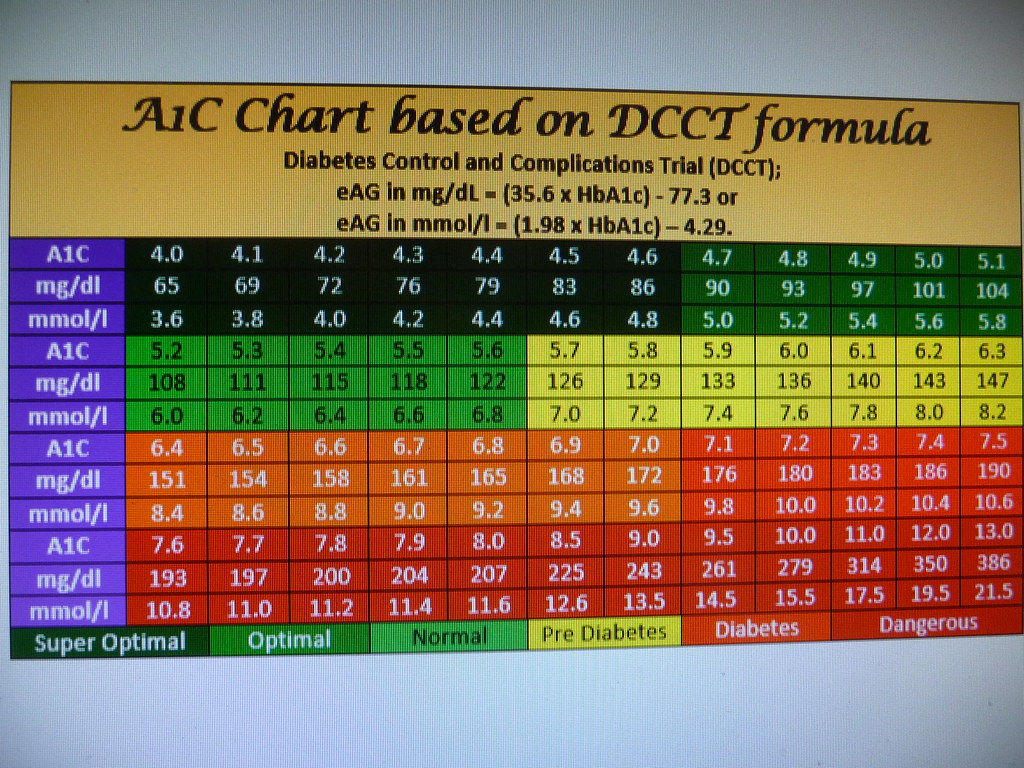
- Normal: Less than 5.7%
- Prediabetes: 5.7% to 6.4%
- Diabetes: 6.5% or higher
Is a single A1C test sufficient for diagnosing diabetes? Generally, a diagnosis of diabetes requires two separate A1C tests with results of 6.5% or higher. However, if a person shows classic symptoms of high blood glucose along with one positive test, a doctor may diagnose diabetes without a second test.
Comparing A1C to Other Diabetes Diagnostic Tests
While the A1C test is a powerful diagnostic tool, it’s not the only method for diagnosing diabetes. Other tests include the Fasting Plasma Glucose (FPG) test and the Oral Glucose Tolerance Test (OGTT). How do these tests compare to A1C?
Fasting Plasma Glucose (FPG) Test
The FPG test measures blood glucose levels after an 8-hour fast. Here are the diagnostic ranges:
- Normal: Less than 100 mg/dL
- Prediabetes: 100 mg/dL to 125 mg/dL
- Diabetes: 126 mg/dL or higher
Oral Glucose Tolerance Test (OGTT)
The OGTT involves drinking a glucose solution and measuring blood glucose levels before and two hours after consumption. The diagnostic ranges are:

- Normal: Less than 140 mg/dL
- Prediabetes: 140 mg/dL to 199 mg/dL
- Diabetes: 200 mg/dL or higher
How does the accuracy of these tests compare to A1C? While all these tests are valid diagnostic tools, the A1C test offers the advantage of reflecting long-term glucose control, making it less susceptible to day-to-day variations that can affect FPG and OGTT results.
Prediabetes: The Warning Stage Before Diabetes
Prediabetes is a condition where blood glucose levels are higher than normal but not yet high enough to be classified as diabetes. This stage is crucial as it presents an opportunity to prevent or delay the onset of type 2 diabetes.
Can prediabetes be reversed? Yes, with appropriate lifestyle changes, it’s possible to return blood glucose levels to the normal range and prevent progression to type 2 diabetes.
Symptoms of Prediabetes
Prediabetes often doesn’t present clear symptoms, which is why regular screening is important, especially for those at higher risk. Some individuals with prediabetes may experience symptoms similar to diabetes, such as:

- Increased thirst
- Frequent urination
- Fatigue
- Blurred vision
Preventing Type 2 Diabetes
Research shows that the risk of developing type 2 diabetes can be reduced by 58% through lifestyle modifications. Key strategies include:
- Losing 7% of body weight (about 15 pounds for a 200-pound person)
- Engaging in moderate exercise (like brisk walking) for 30 minutes a day, five days a week
- Adopting a healthy, balanced diet
- Quitting smoking
- Managing stress
How effective are these lifestyle changes in preventing diabetes? Studies have shown that even modest weight loss and increased physical activity can significantly reduce the risk of progressing from prediabetes to type 2 diabetes.
The Role of A1C in Diabetes Management
For individuals diagnosed with diabetes, regular A1C testing becomes an essential part of their diabetes management plan. The test helps healthcare providers assess the effectiveness of current treatments and make necessary adjustments.
A1C Goals for Diabetics
The American Diabetes Association recommends the following A1C targets for most adults with diabetes:

- Less than 7% for most adults
- Less than 6.5% for some individuals (if achievable without significant hypoglycemia)
- Less than 8% for certain populations (elderly, those with comorbidities)
How often should diabetics have their A1C tested? The ADA recommends A1C testing at least twice a year for those meeting treatment goals and with stable glycemic control. For those not meeting goals or with therapy changes, quarterly tests may be necessary.
Understanding eAG: Estimated Average Glucose
Estimated Average Glucose (eAG) is a relatively new way of reporting A1C results. It translates the A1C percentage into the same units (mg/dL or mmol/L) used in daily blood glucose monitoring, making it easier for patients to understand their overall glucose control.
eAG vs. A1C Conversion
Here’s a simple conversion chart for A1C to eAG:
- A1C 6% = eAG 126 mg/dL (7.0 mmol/L)
- A1C 7% = eAG 154 mg/dL (8.6 mmol/L)
- A1C 8% = eAG 183 mg/dL (10.2 mmol/L)
- A1C 9% = eAG 212 mg/dL (11.8 mmol/L)
Why might eAG be different from the average blood glucose readings on a home monitor? The eAG reflects an overall average including highs and lows, while home monitoring typically captures fewer data points and may miss some fluctuations, especially those occurring during sleep.
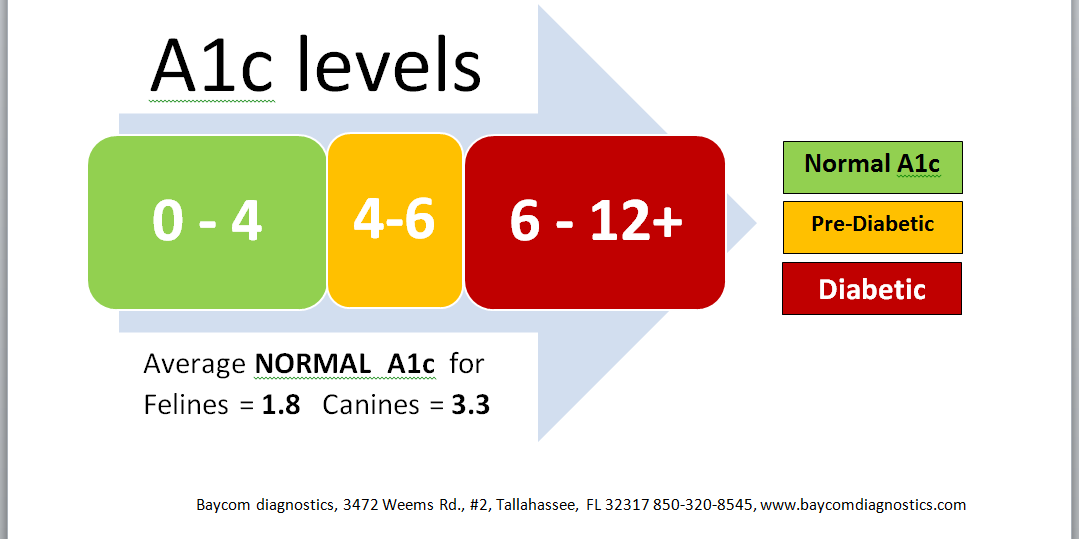
The Impact of A1C Control on Long-Term Health
Maintaining good A1C control is crucial for preventing or delaying diabetes-related complications. Research has shown that every percentage point decrease in A1C can reduce the risk of microvascular complications (such as kidney disease, eye problems, and nerve damage) by 35%.
A1C and Cardiovascular Risk
While the relationship between A1C and cardiovascular disease is complex, studies have shown that improved glycemic control can reduce the risk of cardiovascular events in people with diabetes, especially when combined with management of other risk factors like blood pressure and cholesterol.
How does A1C control affect the risk of diabetic complications? The UK Prospective Diabetes Study (UKPDS) demonstrated that for every 1% reduction in A1C, there was a:
- 21% reduction in diabetes-related deaths
- 14% reduction in myocardial infarction
- 37% reduction in microvascular complications
Factors Affecting A1C Results
While A1C is generally a reliable indicator of average blood glucose levels, certain factors can affect its accuracy. Understanding these factors is crucial for proper interpretation of A1C results.
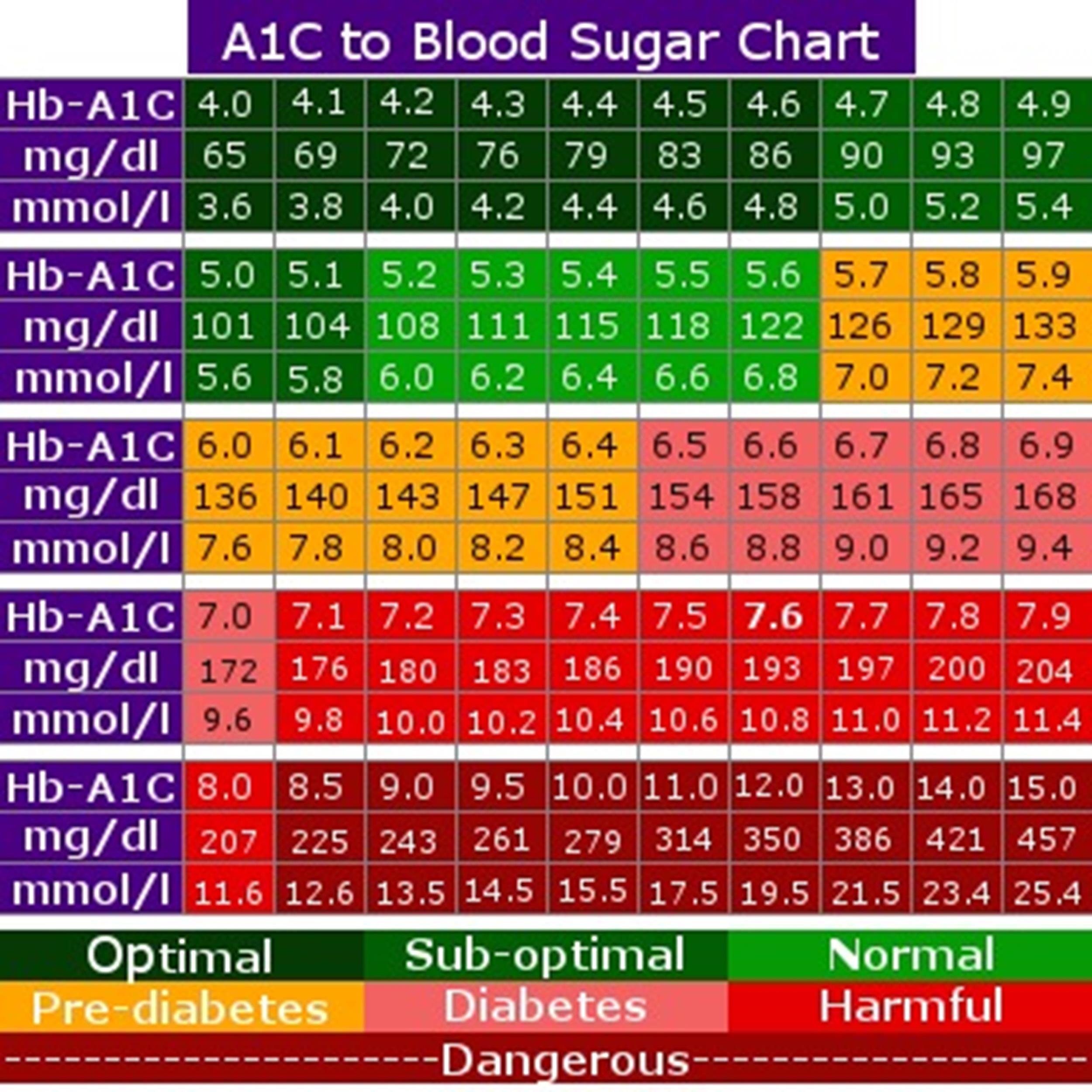
Conditions That May Affect A1C Accuracy
- Anemia or other blood disorders
- Kidney or liver disease
- Certain medications
- Recent blood loss or transfusions
- Pregnancy
Can medications affect A1C results? Yes, certain medications can impact A1C readings. For example, high doses of vitamin C and E can falsely lower A1C results, while some HIV medications can falsely increase them. It’s important to discuss all medications with your healthcare provider when interpreting A1C results.
Racial and Ethnic Variations in A1C
Research has shown that A1C levels can vary among different racial and ethnic groups, even when fasting glucose levels are similar. For instance, African Americans tend to have higher A1C levels than non-Hispanic whites at the same blood glucose concentrations. These differences highlight the importance of considering individual factors and using multiple methods to assess glucose control.
How significant are these racial and ethnic variations in A1C? Studies have found that A1C levels can be 0.4% to 0.7% higher in African Americans compared to non-Hispanic whites with similar fasting glucose levels. This difference is clinically significant and may affect diagnosis and treatment decisions.

Beyond A1C: Other Important Diabetes Markers
While A1C is a crucial tool in diabetes management, it’s not the only measure of glycemic control. Other important markers can provide a more comprehensive picture of diabetes management and overall health.
Fructosamine and Glycated Albumin
These tests reflect average blood glucose levels over a shorter period (2-3 weeks) compared to A1C. They can be useful in situations where A1C may not be reliable, such as in pregnancy or certain blood disorders.
Time in Range (TIR)
With the increasing use of continuous glucose monitoring (CGM), Time in Range has emerged as an important metric. It measures the percentage of time a person’s blood glucose levels are within target range, typically 70-180 mg/dL for most people with diabetes.
How does Time in Range complement A1C? While A1C provides an average, TIR offers insights into daily glucose variability and the frequency of highs and lows. A person might have an A1C within target but still experience significant glucose fluctuations, which TIR can reveal.
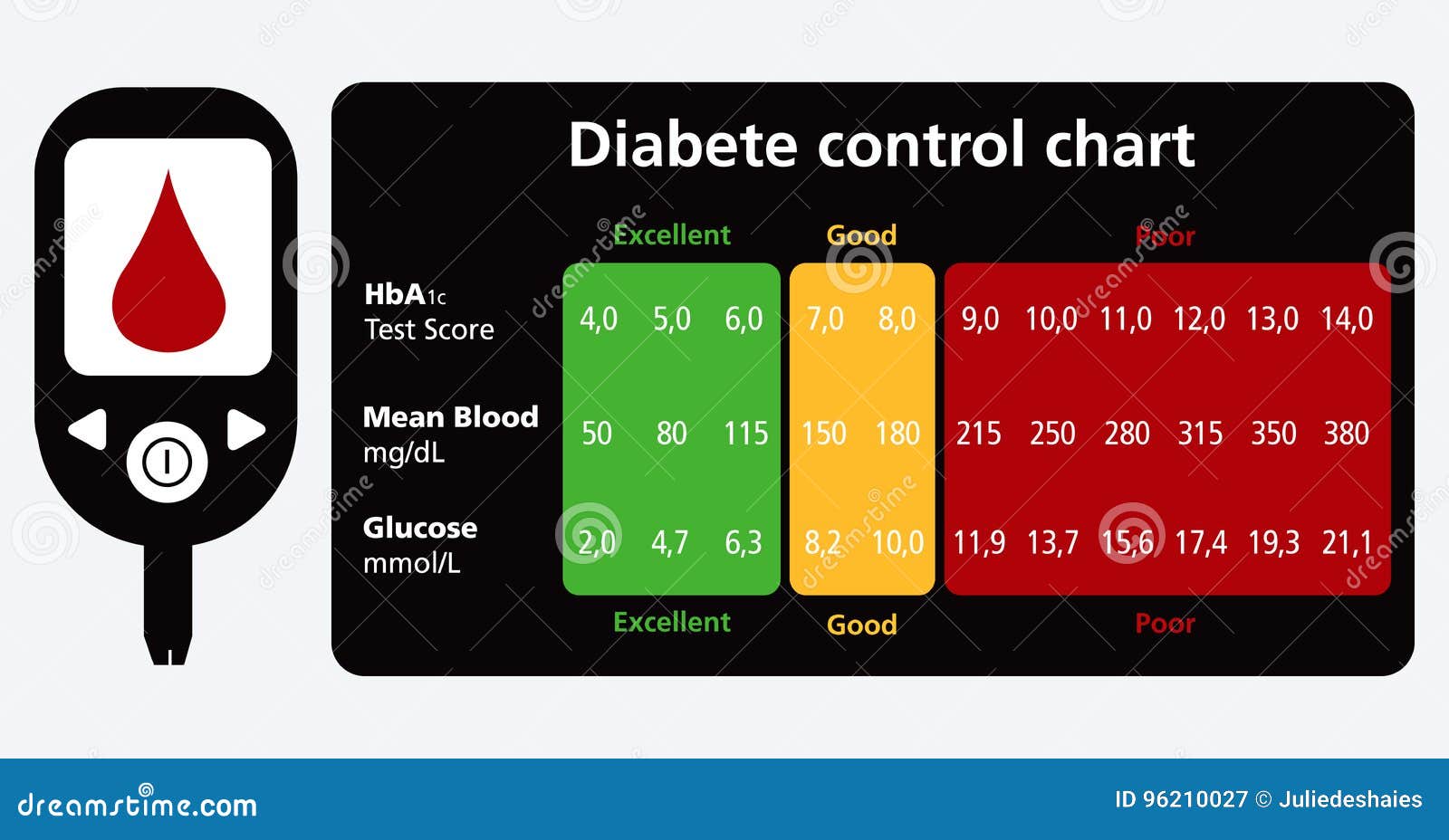
Cardiovascular Risk Markers
Given the increased cardiovascular risk associated with diabetes, monitoring markers such as blood pressure, lipid profiles, and inflammatory markers (like C-reactive protein) is crucial for comprehensive diabetes care.
Why is monitoring cardiovascular risk important in diabetes management? Cardiovascular disease is the leading cause of death among people with diabetes. By monitoring and managing these risk factors alongside glycemic control, the overall risk of complications can be significantly reduced.
Innovative Approaches to A1C Testing and Monitoring
As technology advances, new methods for A1C testing and glucose monitoring are emerging, offering potential improvements in accuracy, convenience, and patient engagement.
Point-of-Care A1C Testing
These rapid tests can provide A1C results within minutes during a clinic visit, allowing for immediate discussion and treatment adjustments. While generally accurate, they may have slightly more variability than laboratory-based tests.
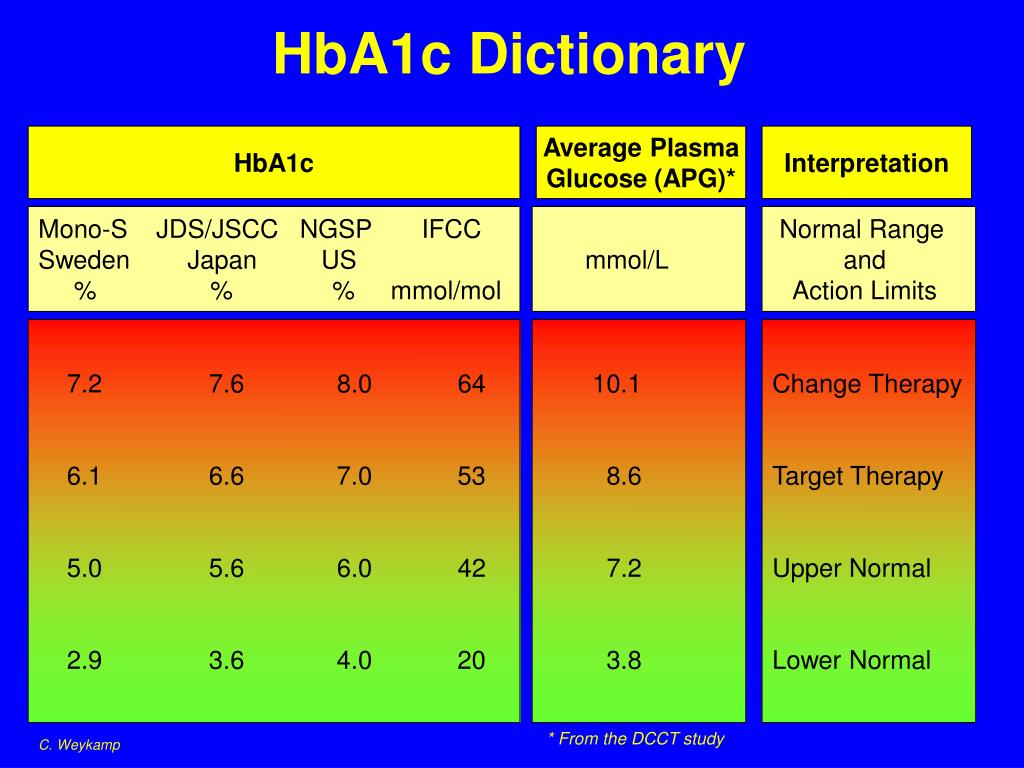
Continuous Glucose Monitoring (CGM) and A1C Estimation
Some CGM devices now offer estimated A1C based on continuous glucose data. This can provide more frequent feedback on long-term glucose trends without the need for blood draws.
How accurate are CGM-estimated A1C values? Studies have shown that CGM-estimated A1C values correlate well with laboratory A1C results, typically within 0.5% accuracy. However, they should not completely replace laboratory testing, especially for diagnostic purposes.
Artificial Intelligence and Predictive A1C
Emerging technologies are exploring the use of artificial intelligence to predict future A1C levels based on current glucose data, lifestyle factors, and other health metrics. This could potentially allow for earlier interventions to prevent A1C increases.
What potential does AI hold for diabetes management? AI-driven predictive models could help identify patterns and risk factors that lead to A1C increases, allowing for personalized interventions before glucose control worsens. This proactive approach could significantly improve long-term outcomes for people with diabetes.

Strategies for Improving A1C Levels
For individuals looking to lower their A1C levels, whether to manage diabetes or prevent its onset, several evidence-based strategies can be effective.
Dietary Approaches
- Carbohydrate counting and management
- Increasing fiber intake
- Choosing low glycemic index foods
- Portion control
- Meal timing and spacing
How significant is the impact of diet on A1C levels? Studies have shown that dietary interventions can lead to A1C reductions of 0.5% to 2%, depending on the individual and the specific approach used.
Exercise and Physical Activity
Regular physical activity can improve insulin sensitivity and help lower A1C levels. Both aerobic exercise and resistance training have been shown to be beneficial.
What type of exercise is most effective for lowering A1C? A combination of aerobic and resistance training appears to be most effective, with studies showing A1C reductions of 0.5% to 0.7% with regular combined exercise programs.
Medication Adherence and Optimization
For those on diabetes medications, adhering to prescribed regimens and working with healthcare providers to optimize medication plans can significantly impact A1C levels.

Stress Management and Sleep Quality
Chronic stress and poor sleep can negatively affect blood glucose control. Implementing stress reduction techniques and improving sleep hygiene can contribute to better A1C levels.
How much can stress reduction and improved sleep impact A1C? While individual responses vary, studies have shown that stress management techniques and improved sleep quality can lead to A1C reductions of 0.2% to 0.5%.
Regular Monitoring and Adjustment
Frequent blood glucose monitoring, whether through traditional methods or CGM, allows for timely adjustments in diet, exercise, and medication to maintain optimal glucose control.
The journey to improved A1C levels is multifaceted, requiring a combination of lifestyle changes, medical management, and ongoing monitoring. By understanding the significance of A1C and implementing these strategies, individuals can take control of their diabetes management and work towards better long-term health outcomes.
Diagnosis | ADA
There are several ways to diagnose diabetes. Each way usually needs to be repeated on a second day to diagnose diabetes.
Testing should be carried out in a health care setting (such as your doctor’s office or a lab). If your doctor determines that your blood glucose (blood sugar) level is very high, or if you have classic symptoms of high blood glucose in addition to one positive test, your doctor may not require a second test to diagnose diabetes.
A1C
The A1C test measures your average blood glucose for the past two to three months. The advantages of being diagnosed this way are that you don’t have to fast or drink anything.
- Diabetes is diagnosed at an A1C of greater than or equal to 6.5%
Result | A1C |
| Normal | less than 5.7% |
| Prediabetes | 5. 7% to 6.4% 7% to 6.4% |
| Diabetes | 6.5% or higher |
Fasting Plasma Glucose (FPG)
This test checks your fasting blood glucose levels. Fasting means after not having anything to eat or drink (except water) for at least 8 hours before the test. This test is usually done first thing in the morning, before breakfast.
- Diabetes is diagnosed at fasting blood glucose of greater than or equal to 126 mg/dl
Result | Fasting Plasma Glucose (FPG) |
| Normal | less than 100 mg/dl |
| Prediabetes | 100 mg/dl to 125 mg/dl |
| Diabetes | 126 mg/dl or higher |
Oral Glucose Tolerance Test (OGTT)
The OGTT is a two-hour test that checks your blood glucose levels before and two hours after you drink a special sweet drink. It tells the doctor how your body processes sugar.
It tells the doctor how your body processes sugar.
- Diabetes is diagnosed at two-hour blood glucose of greater than or equal to 200 mg/dl
Result | Oral Glucose Tolerance Test (OGTT) |
| Normal | less than 140 mg/dl |
| Prediabetes | 140 to 199 mg/dl |
| Diabetes | 200 mg/dl or higher |
Random (also called Casual) Plasma Glucose Test
This test is a blood check at any time of the day when you have severe diabetes symptoms.
- Diabetes is diagnosed at blood glucose of greater than or equal to 200 mg/dl
What is Prediabetes?
Before people develop type 2 diabetes, they almost always have prediabetes—blood glucose levels that are higher than normal but not yet high enough to be diagnosed as diabetes.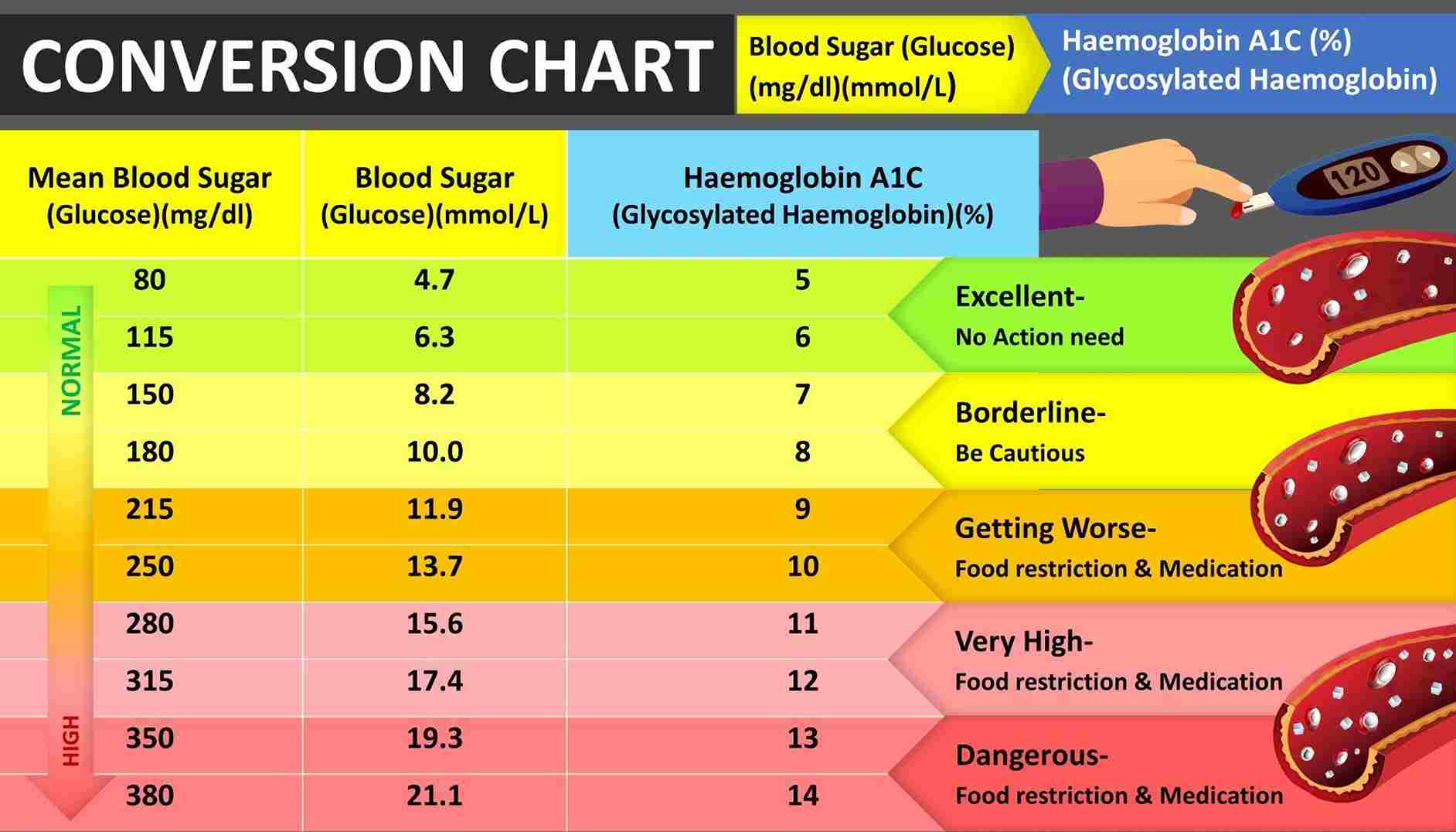
Doctors sometimes refer to prediabetes as impaired glucose tolerance (IGT) or impaired fasting glucose (IFG), depending on what test was used when it was detected. This condition puts you at a higher risk for developing type 2 diabetes and cardiovascular disease.
Symptoms
There are no clear symptoms of prediabetes, so you may have it and not know it.
Some people with prediabetes may have some of the symptoms of diabetes or even problems from diabetes already. You usually find out that you have prediabetes when being tested for diabetes.
If you have prediabetes, you should be checked for type 2 diabetes every one to two years.
Results indicating prediabetes are:
- An A1C of 5.7–6.4%
- Fasting blood glucose of 100–125 mg/dl
- An OGTT two-hour blood glucose of 140–199 mg/dl
Preventing Type 2 Diabetes
You will not develop type 2 diabetes automatically if you have prediabetes. For some people with prediabetes, early treatment can actually return blood glucose levels to the normal range.
Research shows that you can lower your risk for type 2 diabetes by 58% by:
- Losing 7% of your body weight (or 15 pounds if you weigh 200 pounds)
- Exercising moderately (such as brisk walking) 30 minutes a day, five days a week
Don’t worry if you can’t get to your ideal body weight. Losing even 10 to 15 pounds can make a huge difference.
A1C and eAG | ADA
What is the difference between eAG and the average on my monitor?
The A1C test gives you a picture of your average blood glucose (blood sugar) control for the past two to three months. The results give you and your diabetes care team a good idea of how well your diabetes treatment plan is working.
In some ways, the A1C test is like a baseball player’s season batting average: it tells you about a person’s overall success. Neither a single day’s blood test results nor a single game’s batting record gives the same big picture.
The A1C test can help you manage your diabetes by:
- Confirming self-testing results or blood test results by the doctor.

- Judging whether a treatment plan is working.
- Showing you how healthy choices can make a difference in diabetes control.
Your health care provider may report your A1C test result as eAG, or “average glucose,” which directly correlates to your A1C. eAG may help you understand your A1C value because eAG is reported as the same unit (mg/dL) that you see through self-monitoring on your meter or continuous glucose monitor (CGM).
The difference between eAG/A1C and the average on your monitor
The catch is that eAG/A1C is not the same average glucose level as the average of the readings on your meter.
Monitoring measures your blood glucose at a moment in time, whereas eAG/A1C represent an average of your glucose levels 24 hours a day, including times when people are less likely to check their blood sugar (for example, post-meal periods of higher blood sugar).
People with diabetes are also more likely to check their blood glucose more often when they are low (for example, first thing in the morning and before meals), so the average of readings on their meter is likely to be lower than their eAG.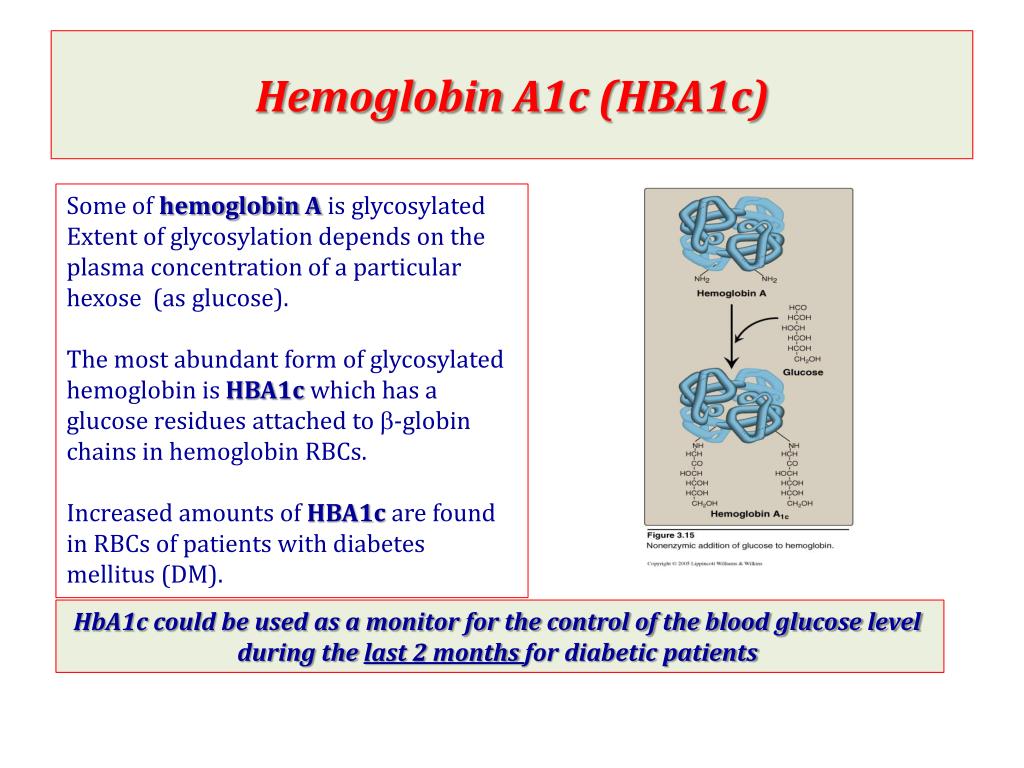
So, how does A1C work?
Hemoglobin, a protein that links up with glucose, is found inside red blood cells. Its job is to carry oxygen from the lungs to all the cells of the body. Glucose enters your red blood cells and links up (or glycates) with molecules of hemoglobin. The more glucose in your blood, the more hemoglobin gets glycated. By measuring the percentage of A1C in the blood, you get an overview of your average blood glucose control for the past few months. Your doctor should measure your A1C level at least twice a year.
What’s your number?
The American Diabetes Association suggests an A1C of 7 percent for nonpregnant adults, which is an eAG of 154 mg/dl, but more or less stringent glycemic goals may be appropriate for each individual.
A1C to eAG
eAG to A1C
Enter your A1C percentage:
Your A1C target is your own
You are unique and you need advice based on your own set of circumstances. If someone who hears your A1C says, “Your A1C level should be x, y, or z.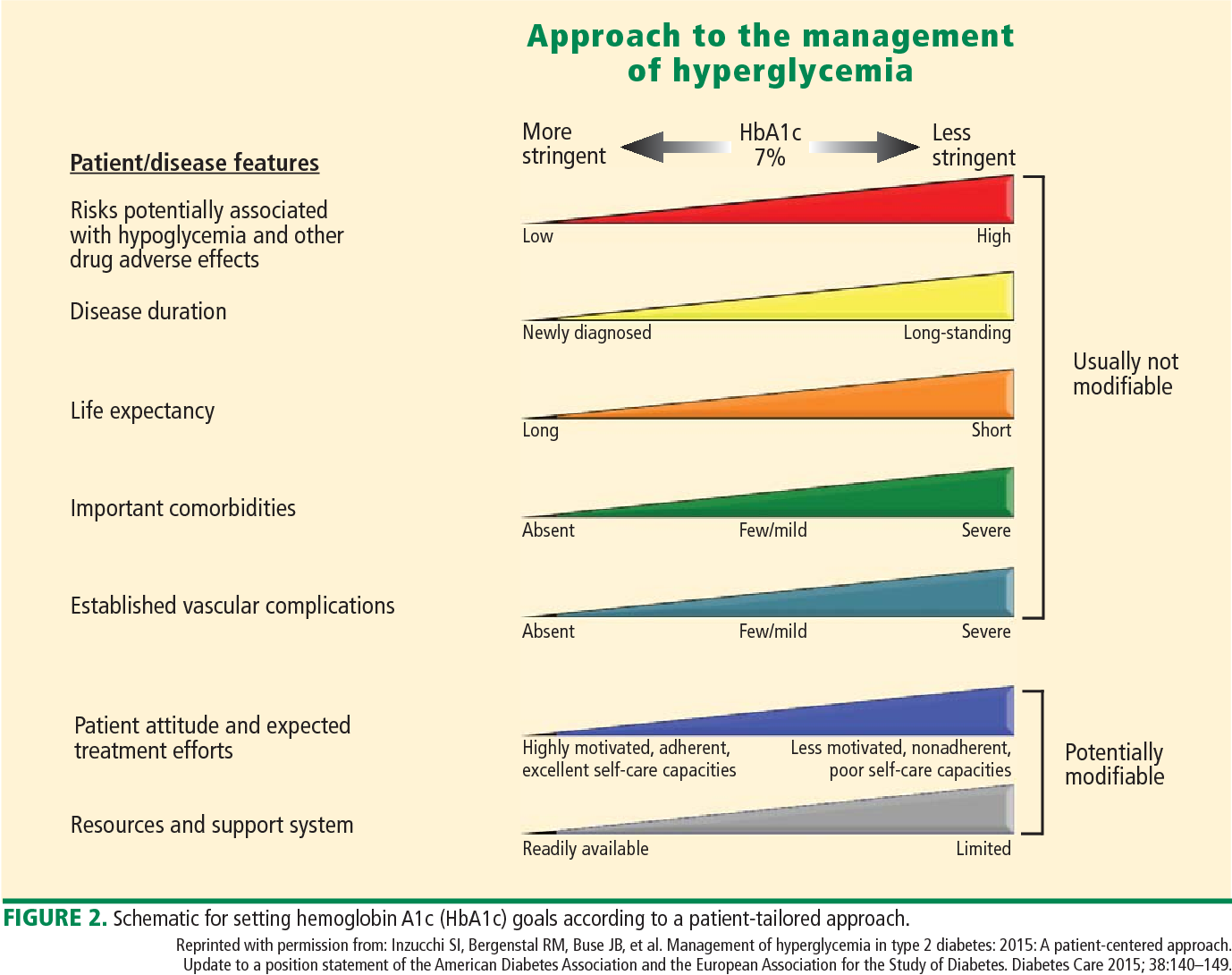 ” Your response can be: “I am working with my doctor on reaching my own safe diabetes target, and it has been customized for my condition.”
” Your response can be: “I am working with my doctor on reaching my own safe diabetes target, and it has been customized for my condition.”
A1C targets often change over time, sometimes decreasing and sometimes increasing. It all depends on the person and circumstances. Don’t compare yourself or your child to others. Know your goals and be clear, persistent and honest in your approach to managing diabetes.
Your diabetes care team is here to help
Never avoid going to see your health care team because you feel like a “failure” or are afraid of disappointing them. The members of your diabetes care team are your coaches. They understand there are multiple life challenges that influence diabetes each day and night. Life is always changing, and you/your child will need support along the way. This is all part of the process of living with diabetes.
Glycated hemoglobin – All about diabetes
To determine how effective the treatment of diabetes mellitus is, as well as to detect prediabetes and diabetes, you can use a special indicator. We are talking about glycated hemoglobin (HbA1c), which shows the average level of sugar in the blood over the previous three months. The article describes what this indicator is, what are its target values, why and how it is used to control diabetes.
We are talking about glycated hemoglobin (HbA1c), which shows the average level of sugar in the blood over the previous three months. The article describes what this indicator is, what are its target values, why and how it is used to control diabetes.
GLYCATED HEMOGLOBIN (HbA1c)
Glycated hemoglobin (HbA1c), also called glycated hemoglobin, glycohemoglobin, hemoglobin A1c, is a test that shows the average glucose level over the past three months. What is this indicator? In the human body, the blood glucose level is constantly changing depending on nutrition, physical activity, stress and other factors, and is maintained in the strict range of norms from 3.5 to 7.8 mmol / l. The process of glycosylation occurs in the blood – the attachment of glucose to various blood proteins. When glucose binds to the hemoglobin protein that is part of the erythrocytes, glycated hemoglobin (HbA1c) is formed. This process is irreversible – glucose remains bound to hemoglobin by the end of the life of an erythrocyte, which is 80 – 90 days, approximately 3 months 1 . The HbA1c indicator is measured in% of hemoglobin combined with glucose, in the norm is 4 – 5.6%. In diabetes mellitus, the process of transferring glucose from the blood to the cells of the body is disrupted due to a relative or absolute deficiency of the hormone insulin, and the blood glucose level rises. The higher the blood sugar levels over the past three months, the more active the process of protein glycosylation, the higher the % HbA1c.
The HbA1c indicator is measured in% of hemoglobin combined with glucose, in the norm is 4 – 5.6%. In diabetes mellitus, the process of transferring glucose from the blood to the cells of the body is disrupted due to a relative or absolute deficiency of the hormone insulin, and the blood glucose level rises. The higher the blood sugar levels over the past three months, the more active the process of protein glycosylation, the higher the % HbA1c.
Compliance with the level of HbA1c to the average concentration of blood glucose (ADA , 2009) 1,2,5
| 9 7% | 8% | 9% | 10% | 11% | 12% | |||
| Mean blood glucose mmol/l | 5.4 | 7.0 | 8.6 | 10.2 | 11.8 | 13.4 | 14.9 | 16.5 |
If you have diabetes, check your HbA1c every three months, but at least twice a year.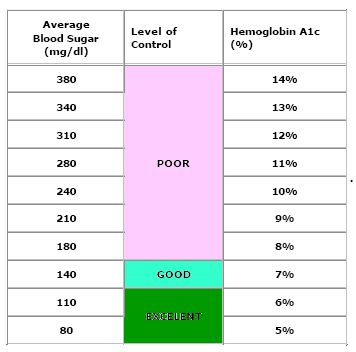 How the HbA1c analysis is carried out, to whom and how often it is recommended to determine it, read here: “DETERMINATION OF GLYCATED HEMOGLOBIN (HbA1c)”.
How the HbA1c analysis is carried out, to whom and how often it is recommended to determine it, read here: “DETERMINATION OF GLYCATED HEMOGLOBIN (HbA1c)”.
HbA1c IN THE DETECTION AND DIAGNOSIS OF PREDEABETES AND DIABETES
In 2011, WHO approved the use of HBA1C for the detection and diagnosis of diabetes mellitus 1.2
Norm – up to 5.6%
9 0002 Prediabetes – 5.7% to 6 .4%
Diabetes mellitus – above 6.5%
Indicator HbA1c more than 5.6% ? — contact a doctor who will conduct additional examinations and establish a diagnosis. Early detection of prediabetes is an opportunity to prevent diabetes. For more information about screening, detection and diagnosis of prediabetes and diabetes, read: “DIAGNOSIS OF DIABETES MELLITUS”
Please note that in some diseases and conditions, the HBA1c indicator loses its information content and does not correspond to the actual blood glucose concentration.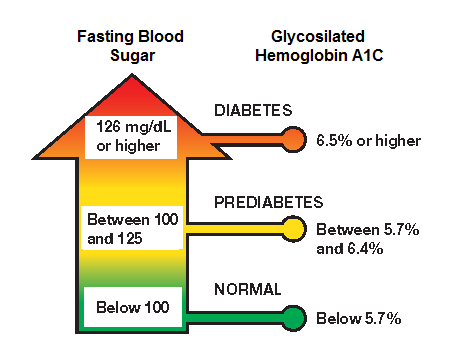
WHY REACH HbA1c TARGETS?
Analysis of HBA1c has long been the main indicator for evaluating the effectiveness and timely correction of diabetes treatment. Many studies have shown a direct relationship between the development of complications and the state of compensation for diabetes – the higher the level of HbA1c, the greater the risk of developing complications of diabetes 1,4,5 . The DCCT (Diabetes Control and Complication Trial) showed a 50–76% reduction in the development and progression of diabetic nephroretino and neuropathy 5 . The UKPDS (The UK prospective Diabetes Study) has shown that a 1% reduction in HbA1c levels in diabetes results in a 21% reduction! the risk of death associated with complications of diabetes, the risk of developing myocardial infarction decreases by 14% and the risk of developing microvascular complications decreases by 37 %.
What are the target HbA1c values
HbA1c TARGETS are individual for each person with diabetes and are recommended by a physician depending on age, life expectancy, presence of complications, patient condition, risk of hypoglycemia 1.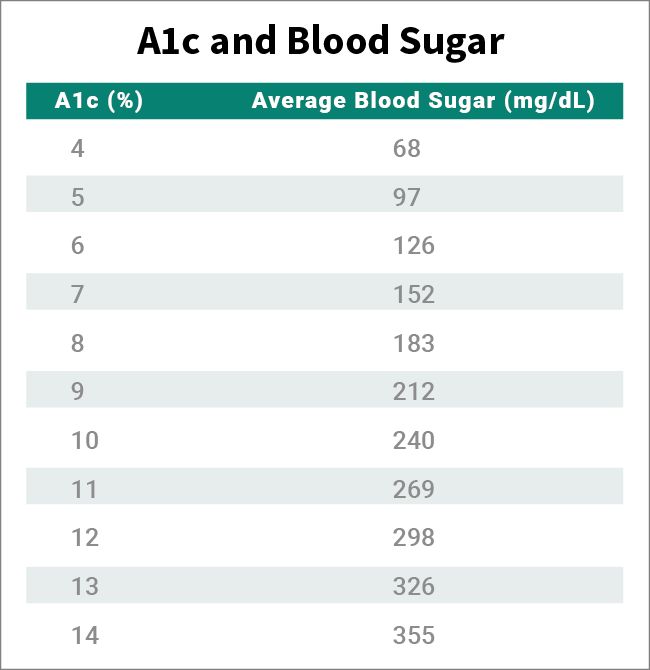 5 .
5 .
- HbA1c 5.6 – 6 – 6.5% (as close to normal as possible) – recommended for recent illnesses, young women, women who are planning a pregnancy and pregnant women with diabetes
- HbA1c < 7% (blood glucose from 3.3 up to 10 mmol/l) – for most adults with diabetes
- HvA1c 7.5 – 8% – for children, especially small ones, and the elderly, for whom it is very important to prevent the development of severe hypoglycemia conscientious attitude towards their health. But the bonus is worth it – good health and prevention of complications. In addition, you can get another bonus – cost savings. According to the rules for providing insulin in Ukraine, patients who are not included in the preferential categories (children, adolescents, pregnant women, people with poor eyesight) pay an extra 15% of the cost for more expensive insulin analogues and insulin in syringe pens. ATTENTION! Patients who have achieved and maintain the target HbA1c level of less than 7.
 5% within 6 months of treatment have the right not to pay more, but to receive the necessary drug free of charge. In this way, patients are encouraged to take responsibility for their treatment.
5% within 6 months of treatment have the right not to pay more, but to receive the necessary drug free of charge. In this way, patients are encouraged to take responsibility for their treatment.Thus, the determination of HbA1c makes it possible:
- to detect the state of prediabetes in time and this is a chance for a person to start a healthy diet, move more, normalize weight and prevent or delay the development of diabetes HbA1c, feel good and prevent the development and progression of complications
Blood test for glycated hemoglobin (HbA1) — prices from 170 rubles. in Moscow, 1407 addresses
Glycosylated hemoglobin (glycated hemoglobin, glycohemoglobin, hemoglobin A1c, HbA 1 c ) is a biochemical indicator reflecting the average blood glucose level over the previous 3 months. The determination of glycated hemoglobin in the blood is carried out in combination with fasting blood sugar and a glucose tolerance test.
 The study of the concentration of the indicator is used to diagnose diabetes and monitor the effectiveness of the selected treatment. Whole blood with EDTA is used to test for glycosylated hemoglobin. Most often, the study is carried out by the colorimetric method. Reference values of glycated hemoglobin in human blood are in the range of 4-6.2%. The term of the analysis is from 2 hours to 5 days.
The study of the concentration of the indicator is used to diagnose diabetes and monitor the effectiveness of the selected treatment. Whole blood with EDTA is used to test for glycosylated hemoglobin. Most often, the study is carried out by the colorimetric method. Reference values of glycated hemoglobin in human blood are in the range of 4-6.2%. The term of the analysis is from 2 hours to 5 days.Glycosylated hemoglobin (glycated hemoglobin, glycohemoglobin, hemoglobin A1c, HbA 1 c ) is a biochemical indicator reflecting the average blood glucose level over the previous 3 months. The determination of glycated hemoglobin in the blood is carried out in combination with fasting blood sugar and a glucose tolerance test. The study of the concentration of the indicator is used to diagnose diabetes and monitor the effectiveness of the selected treatment. Whole blood with EDTA is used to test for glycosylated hemoglobin. Most often, the study is carried out by the colorimetric method.
 Reference values of glycated hemoglobin in human blood are in the range of 4-6.2%. The term of the analysis is from 2 hours to 5 days.
Reference values of glycated hemoglobin in human blood are in the range of 4-6.2%. The term of the analysis is from 2 hours to 5 days.Hemoglobin is a complex iron-containing protein found in red blood cells that transports oxygen from the lungs to the tissues. There are two types of normal hemoglobin: hemoglobin A1 – HbA (α 2 β 2 ) and hemoglobin A2 – HbA 2 (α 2 δ 2 ). In circulating blood, 97% of the heme-containing protein is represented by type A1 and only 3% by type A2. Glycosylated hemoglobin is formed by spontaneous binding of hemoglobin A to glucose present in the bloodstream.
The degree of saturation of HbA with glucose and the speed of their connection with each other is directly dependent on the average content of it in the bloodstream over the past 120 days (such is the duration of the existence of red blood cells). Ultimately, several subtypes of glycosylated hemoglobin are formed, the main one being HbA1c.
 It is this variant of glycohemoglobin that predominates in venous blood and is associated with the level of hyperglycemia. The formation and disappearance of hemoglobin A1c is a continuous process, since every day new young red blood cells replace the old dead ones in the bloodstream.
It is this variant of glycohemoglobin that predominates in venous blood and is associated with the level of hyperglycemia. The formation and disappearance of hemoglobin A1c is a continuous process, since every day new young red blood cells replace the old dead ones in the bloodstream.The study of the concentration of glycated hemoglobin is used in endocrinology for long-term monitoring of the course of diabetes mellitus, monitoring the sufficiency and effectiveness of the therapy.
Indications
A blood test for glycated hemoglobin is prescribed if there are complaints of dry mouth, thirst, polyuria, decreased vision. These symptoms may be signs of diabetes. A study on glycosylated hemoglobin is indicated for purulent skin diseases (furunculosis, pyoderma), which are not amenable to conventional therapy for a long time. Such manifestations may indicate the presence of latent diabetes mellitus. The study of the level of glycated hemoglobin is carried out in persons with newly diagnosed diabetes in order to determine the average concentration of sugar in the blood for the previous quarter.
 Subsequently, the determination of the indicator is assigned every 3 months to confirm the adequacy and sufficiency of therapeutic measures, as well as timely adjustment of therapy.
Subsequently, the determination of the indicator is assigned every 3 months to confirm the adequacy and sufficiency of therapeutic measures, as well as timely adjustment of therapy.A blood test for glycated hemoglobin is done in people over 40 years of age to detect predisposition to diabetes mellitus. Determination of the level of glycosylated hemoglobin is used as a predictor of the development of the consequences of diabetes mellitus: diabetic polyneuropathy, retinopathy, encephalopathy, macro- and microangiopathies. The study of the level of glycosylated hemoglobin is not prescribed for children under six months. This is due to the fact that they retain a high level of fetal hemoglobin, unable to bind to sugar. It is recommended to avoid testing for glycosylated hemoglobin after blood transfusion, as preservative solutions for blood components usually contain sugar-containing agents.
Blood preparation and collection
Glycosylated hemoglobin blood testing does not require special preparation.
 Blood sampling is carried out at any convenient time, regardless of the prescription of food intake. The results of the study are not affected by smoking, alcohol consumption, the intensity of sports, the composition of the products consumed the day before. Blood for glycosylated hemoglobin can be donated in the treatment room of the clinic, the collection point for biological material from laboratories. Biomaterial samples are taken from a peripheral vein or finger. Blood is collected with a disposable syringe or vacutainer and delivered by courier to the laboratory.
Blood sampling is carried out at any convenient time, regardless of the prescription of food intake. The results of the study are not affected by smoking, alcohol consumption, the intensity of sports, the composition of the products consumed the day before. Blood for glycosylated hemoglobin can be donated in the treatment room of the clinic, the collection point for biological material from laboratories. Biomaterial samples are taken from a peripheral vein or finger. Blood is collected with a disposable syringe or vacutainer and delivered by courier to the laboratory.High-speed, ultra-compact portable glycated hemoglobin analyzers, which can also be used at home, are gaining popularity. However, due to the high cost, this method has not yet found a fairly wide application in Russia. In clinical diagnostic laboratories, several methods are used to study glycosylated hemoglobin in the blood: low pressure cation exchange chromatography, capillary electrophoresis, immunoturbidimetric method, high performance liquid chromatography, colorimetric method.

The last method is the most common, fairly inexpensive and accurate. Its essence lies in the fact that the stable form of HbA1c contains 1-deoxy-1-fructose. When phosphoric acid is added to a blood sample, it dehydrates to 5-hydroxymethyl-2-furaldehyde. This compound, interacting with 2-thiobarbituric acid, forms a substance with maximum absorption. The device spectrophotometer at a wavelength of 443 nm determine the optical density of the resulting solution and carry out mathematical calculations. The results of the analysis for glycosylated hemoglobin are provided to the doctor or the subject within 5 working days.
Normal values
The normal value of glycosylated hemoglobin in the blood of a healthy person is in the range of 4-6.2%. The level of the indicator does not depend on the sex and age characteristics of the subject. When interpreting the results, it should be taken into account that a long-term low-carbohydrate diet, long-term intensive sports, an overdose of hypoglycemic agents (tablets, insulin) reduce the concentration of glycated hemoglobin.
 The results of the analysis are unreliable in conditions that change the duration of stay of erythrocytes in the bloodstream. With posthemorrhagic and hemolytic anemia, the level of glycosylated hemoglobin decreases, and with iron deficiency anemia it increases. In patients with genetic abnormalities of hemoglobin (sickle cell anemia, thalassemia, hemoglobinopathies), the content of glycated hemoglobin will be reduced.
The results of the analysis are unreliable in conditions that change the duration of stay of erythrocytes in the bloodstream. With posthemorrhagic and hemolytic anemia, the level of glycosylated hemoglobin decreases, and with iron deficiency anemia it increases. In patients with genetic abnormalities of hemoglobin (sickle cell anemia, thalassemia, hemoglobinopathies), the content of glycated hemoglobin will be reduced.Diagnostic value
HbA1c test results determine the average blood glucose level over the past 3 months. An HbA1c content of less than 5.7% indicates that there is currently no likelihood of developing diabetes mellitus. With glycosylated hemoglobin values ranging from 5.7 to 6.5%, there are no signs of diabetes mellitus, there are manifestations of prediabetes. The risk of overall mortality and mortality from stroke and myocardial infarction increases. A glycosylated hemoglobin concentration of more than 6.5% indicates the need to exclude or confirm insulin-dependent or non-insulin-dependent diabetes mellitus.
 Additional research methods are required.
Additional research methods are required.In patients with non-insulin-dependent diabetes mellitus, this level of glycosylated hemoglobin increases mortality from malignant neoplasms, especially in the colorectal region. An increase in the level of glycosylated hemoglobin in the blood always indicates the presence of a long period of hyperglycemia and an increased risk of complications in the form of retinopathy, nephropathy, polyneuropathy, micro- and macroangiopathies. A patient suffering from hyperglycemia should strive to reach the level of glycosylated hemoglobin of a healthy person – 5.7%. However, this is not always possible. In such cases, the goal of therapy is to reduce the concentration of HbA1c to 6.5%. If such a goal is achieved, then it can be argued that diabetes is well compensated, the likelihood of the consequences of hyperglycemia in the form of various complications is reduced to a minimum level.
Glycosylated hemoglobin test is performed for women with diabetes when planning a pregnancy.


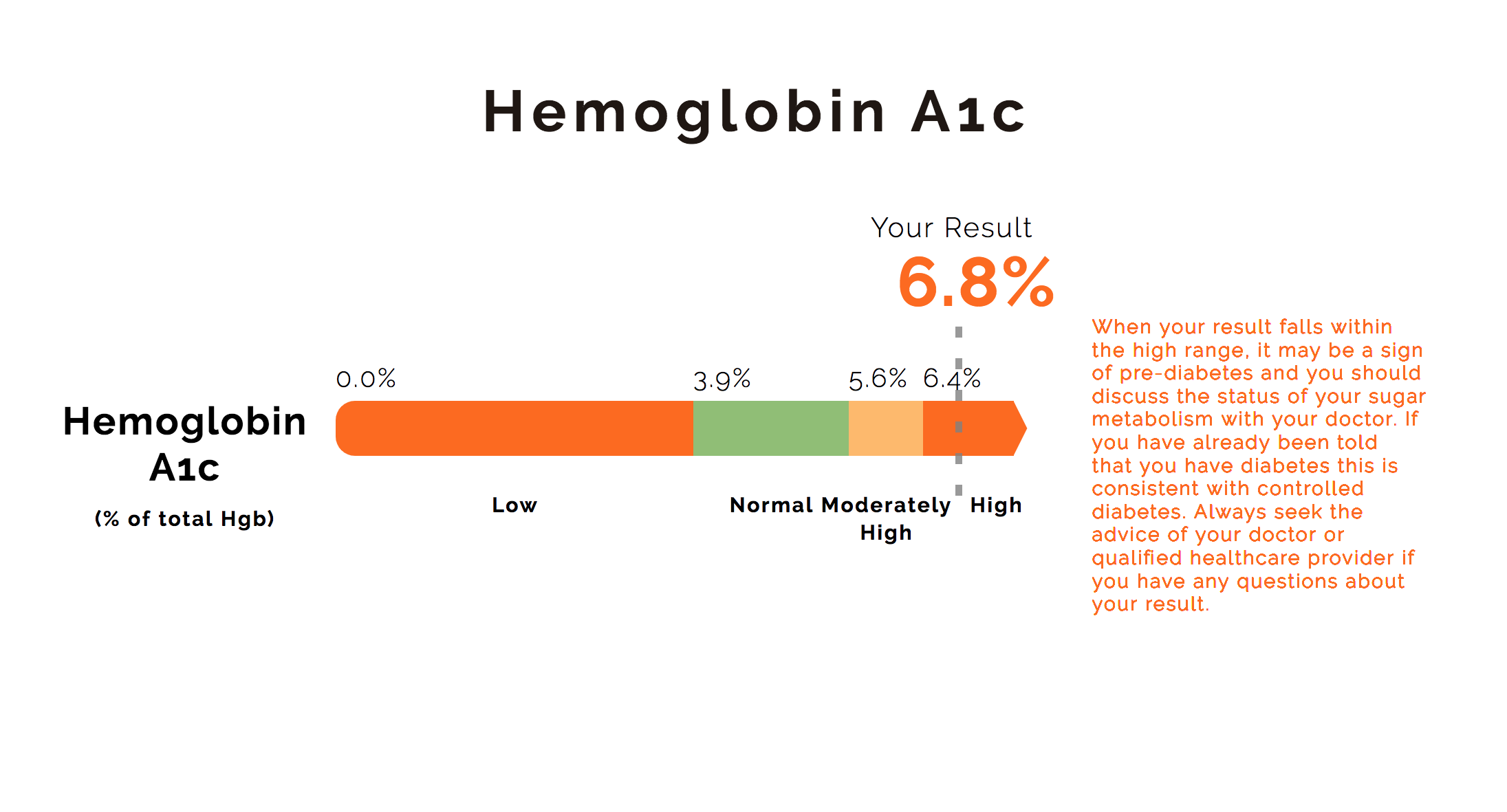
 5% within 6 months of treatment have the right not to pay more, but to receive the necessary drug free of charge. In this way, patients are encouraged to take responsibility for their treatment.
5% within 6 months of treatment have the right not to pay more, but to receive the necessary drug free of charge. In this way, patients are encouraged to take responsibility for their treatment.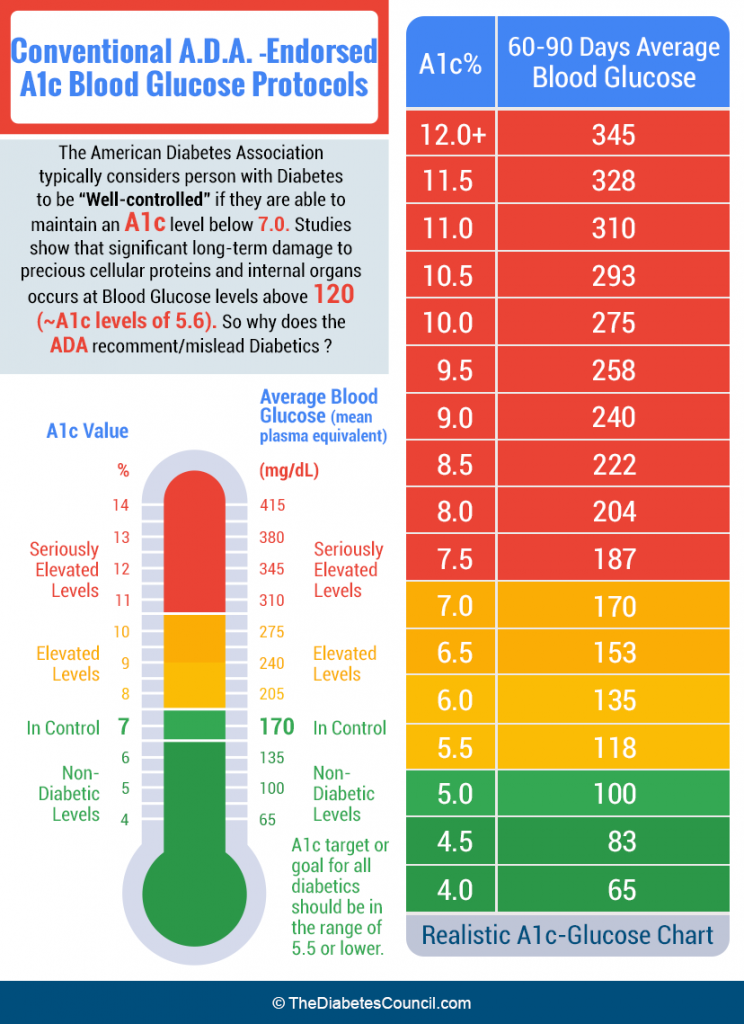 The study of the concentration of the indicator is used to diagnose diabetes and monitor the effectiveness of the selected treatment. Whole blood with EDTA is used to test for glycosylated hemoglobin. Most often, the study is carried out by the colorimetric method. Reference values of glycated hemoglobin in human blood are in the range of 4-6.2%. The term of the analysis is from 2 hours to 5 days.
The study of the concentration of the indicator is used to diagnose diabetes and monitor the effectiveness of the selected treatment. Whole blood with EDTA is used to test for glycosylated hemoglobin. Most often, the study is carried out by the colorimetric method. Reference values of glycated hemoglobin in human blood are in the range of 4-6.2%. The term of the analysis is from 2 hours to 5 days.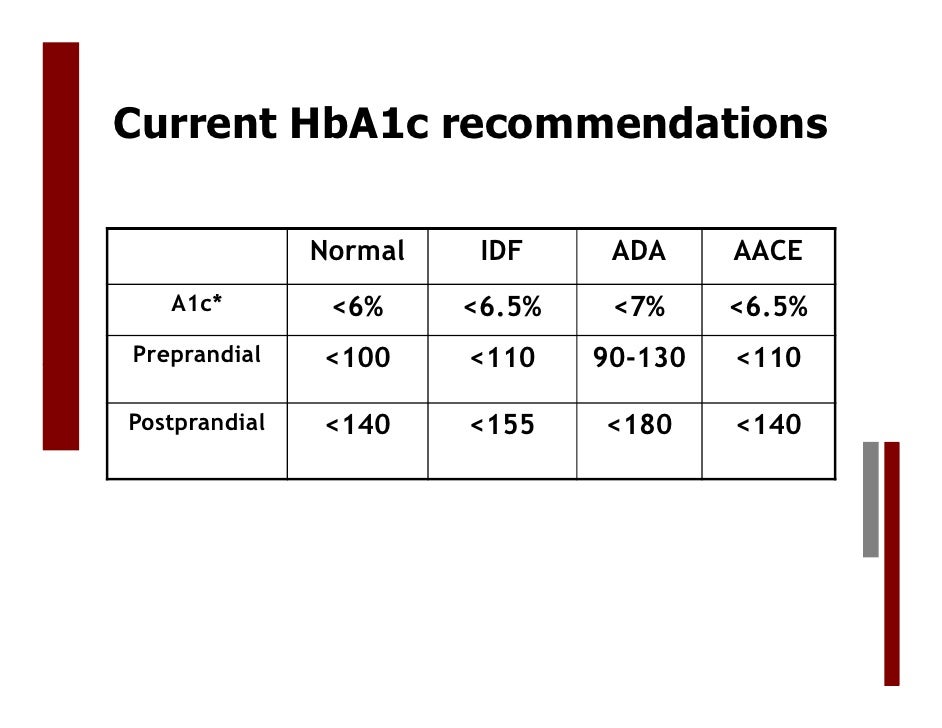 Reference values of glycated hemoglobin in human blood are in the range of 4-6.2%. The term of the analysis is from 2 hours to 5 days.
Reference values of glycated hemoglobin in human blood are in the range of 4-6.2%. The term of the analysis is from 2 hours to 5 days. It is this variant of glycohemoglobin that predominates in venous blood and is associated with the level of hyperglycemia. The formation and disappearance of hemoglobin A1c is a continuous process, since every day new young red blood cells replace the old dead ones in the bloodstream.
It is this variant of glycohemoglobin that predominates in venous blood and is associated with the level of hyperglycemia. The formation and disappearance of hemoglobin A1c is a continuous process, since every day new young red blood cells replace the old dead ones in the bloodstream. Subsequently, the determination of the indicator is assigned every 3 months to confirm the adequacy and sufficiency of therapeutic measures, as well as timely adjustment of therapy.
Subsequently, the determination of the indicator is assigned every 3 months to confirm the adequacy and sufficiency of therapeutic measures, as well as timely adjustment of therapy./1087678_color1-5bc645a746e0fb00516179c9.png) Blood sampling is carried out at any convenient time, regardless of the prescription of food intake. The results of the study are not affected by smoking, alcohol consumption, the intensity of sports, the composition of the products consumed the day before. Blood for glycosylated hemoglobin can be donated in the treatment room of the clinic, the collection point for biological material from laboratories. Biomaterial samples are taken from a peripheral vein or finger. Blood is collected with a disposable syringe or vacutainer and delivered by courier to the laboratory.
Blood sampling is carried out at any convenient time, regardless of the prescription of food intake. The results of the study are not affected by smoking, alcohol consumption, the intensity of sports, the composition of the products consumed the day before. Blood for glycosylated hemoglobin can be donated in the treatment room of the clinic, the collection point for biological material from laboratories. Biomaterial samples are taken from a peripheral vein or finger. Blood is collected with a disposable syringe or vacutainer and delivered by courier to the laboratory.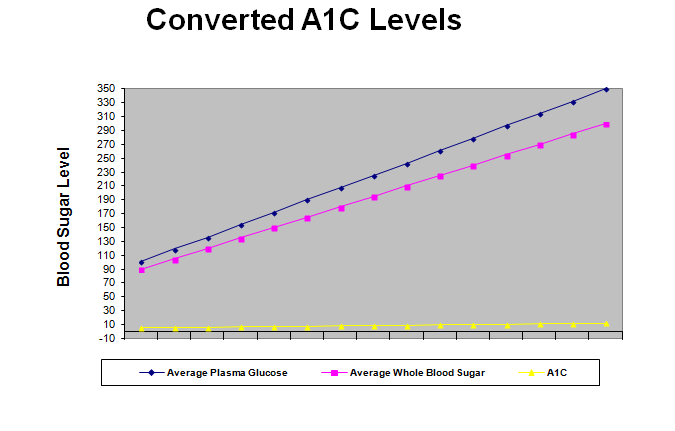
 The results of the analysis are unreliable in conditions that change the duration of stay of erythrocytes in the bloodstream. With posthemorrhagic and hemolytic anemia, the level of glycosylated hemoglobin decreases, and with iron deficiency anemia it increases. In patients with genetic abnormalities of hemoglobin (sickle cell anemia, thalassemia, hemoglobinopathies), the content of glycated hemoglobin will be reduced.
The results of the analysis are unreliable in conditions that change the duration of stay of erythrocytes in the bloodstream. With posthemorrhagic and hemolytic anemia, the level of glycosylated hemoglobin decreases, and with iron deficiency anemia it increases. In patients with genetic abnormalities of hemoglobin (sickle cell anemia, thalassemia, hemoglobinopathies), the content of glycated hemoglobin will be reduced.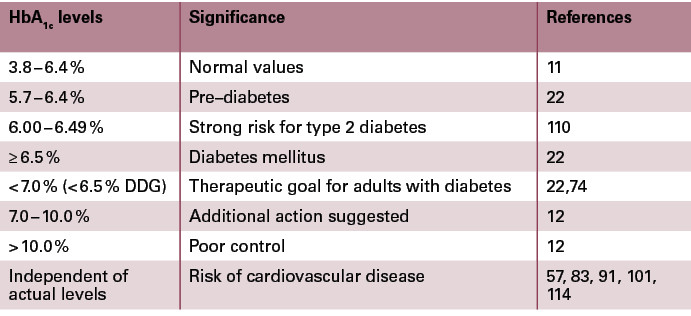 Additional research methods are required.
Additional research methods are required.